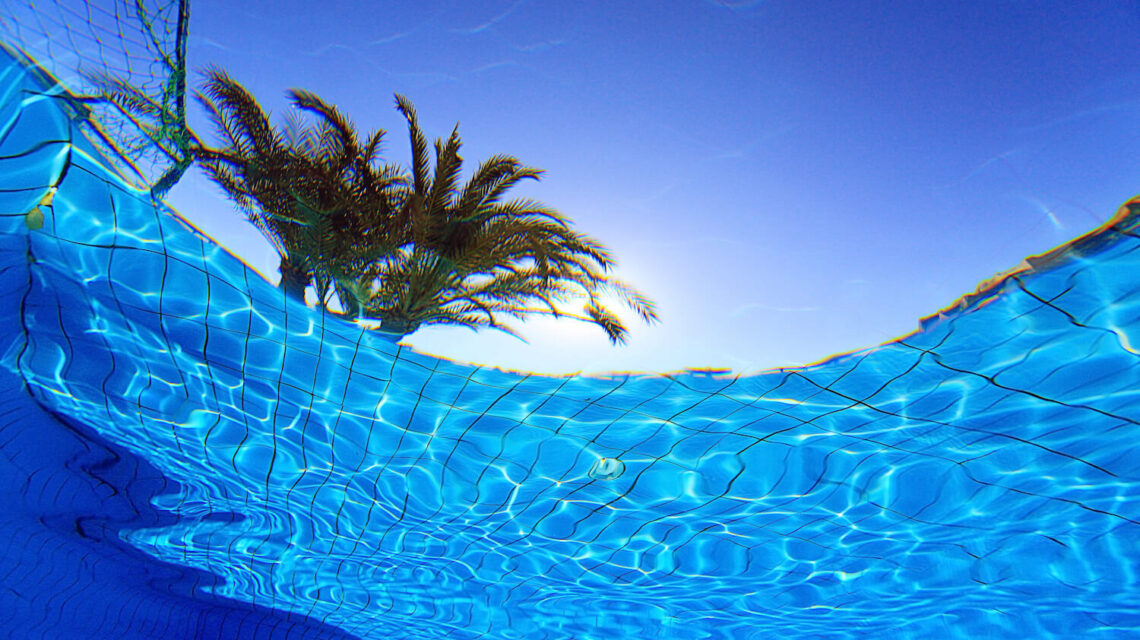A sparkling, inviting swimming pool is the epitome of summer enjoyment. It’s where friends and family gather to cool off, relax, and create cherished memories. However, maintaining a pool isn’t all fun and games; it requires regular cleaning and maintenance to ensure it stays safe, clean, and refreshing. Neglecting your pool’s upkeep can lead to water quality issues, costly repairs, and potentially dangerous conditions.
In this article, we’ll explore the top signs your pool needs cleaning and maintenance services so you can keep your oasis in tip-top shape all season long.
1. Cloudy or Murky Water
One of the most obvious signs that your pool is in need of cleaning and maintenance is cloudy or murky water. A pristine pool should have crystal-clear water that allows you to see the bottom, even in the deep end. Cloudy water can be caused by various factors, including algae growth, debris accumulation, and improper chemical balance.
Algae are microscopic organisms that can rapidly multiply and turn your pool water green or cloudy if not properly controlled. Debris such as leaves, dirt, and pollen can clog your pool’s filtration system, reducing its effectiveness at removing impurities. Additionally, an imbalance of chemicals like pH, chlorine, or alkalinity can cause water cloudiness.
To address cloudy water, start by testing the water’s chemical levels and adjusting them as needed. Clean the pool skimmer and filter regularly to remove debris, and shock the pool if algae are present. Maintaining the right chemical balance and a clean filtration system will help clear up the water and keep it sparkling.
2. Algae Growth
Algae are the bane of any pool owner’s existence. These green invaders can quickly take over your pool, turning it into a slimy, unsightly mess. Algae thrive in warm, stagnant water with improper chemical levels. Signs of algae growth include green or black patches on the pool walls and floor, as well as cloudy water.
Preventing algae growth is crucial, as it can be challenging to eradicate once it takes hold. Regularly testing and maintaining proper chemical levels in your pool can help keep algae at bay. You should also brush and vacuum the pool walls and floor to remove any potential hiding spots for algae.
If you notice signs of algae, act quickly to address the issue. Shocking the pool with a high dose of chlorine and algaecide can kill off existing algae. Afterward, thoroughly brush and vacuum the pool to remove dead algae. Maintaining good circulation with your pool pump and filter system is also essential for preventing algae growth.
3. Green or Black Stains
Stains on your pool’s surfaces, especially green or black ones, are a telltale sign that your pool needs attention. These stains are often caused by minerals, algae, or other organic materials that have built up over time. Mineral stains, for example, can result from high calcium or metal levels in the water, while black stains are usually a sign of black algae growth.
To remove stains, you may need to employ specific cleaning techniques. For mineral stains, you can use stain removers or sequestering agents to prevent further staining. Black algae stains are more challenging to eradicate and may require aggressive brushing, shocking the pool, and using specialized algaecides.
Regularly inspect your pool’s surfaces for stains, and take action as soon as you notice them. Keeping the water chemistry balanced and maintaining good pool hygiene can go a long way in preventing stains from forming in the first place.
4. Strong Chlorine Smell
While a faint chlorine scent is common in pools, a strong, overwhelming smell of chlorine can indicate a problem. It might seem counterintuitive, but a strong chlorine odor is often a sign that your pool is not adequately sanitized. When chlorine reacts with contaminants like sweat, urine, and organic debris, it can create chloramines, which release that distinctive odor.
To address this issue, you’ll need to shock the pool with a higher dose of chlorine to break down the chloramines. Additionally, make sure your pool’s filtration system is working correctly and running long enough each day to adequately circulate and filter the water.
Remember that maintaining proper chlorine levels and water chemistry is essential not only for sanitation but also for swimmer comfort and the longevity of your pool equipment.
5. Unbalanced Water Chemistry
Water chemistry is the backbone of a healthy pool. If the chemical balance is off, it can lead to various problems, including cloudy water, algae growth, and equipment damage. Testing your pool water regularly and maintaining the right chemical levels is crucial to keeping your pool clean and safe.
The key pool chemical parameters to monitor include:
pH Levels:
pH measures the acidity or alkalinity of the water. If the pH is too high (alkaline) or too low (acidic), it can lead to water quality issues and damage pool equipment. The ideal pH range for pool water is between 7.4 and 7.6.
Chlorine Levels:
Chlorine is the primary sanitizer for pools, and maintaining the correct chlorine level is vital for killing bacteria and algae. The recommended chlorine level for most pools is between 1.0 and 3.0 parts per million (ppm).
Total Alkalinity:
Total alkalinity acts as a buffer for pH, helping to keep it stable. The ideal total alkalinity range is between 80 and 120 ppm.
Calcium Hardness:
Calcium hardness measures the level of dissolved calcium in the water. Low calcium hardness can lead to surface etching, while high levels can cause scaling. The ideal range for calcium hardness is typically between 200 and 400 ppm.
Cyanuric Acid (CYA) Levels:
CYA, also known as pool stabilizer or conditioner, helps protect chlorine from degradation due to sunlight. The recommended CYA level is between 30 and 50 ppm.
To maintain balanced water chemistry, use appropriate chemicals and adjust levels as needed based on regular testing. Follow the manufacturer’s instructions and consider seeking the advice of a pool professional if you’re unsure about how to balance your pool’s chemistry effectively.
6. Poor Water Circulation
Proper water circulation is vital for maintaining a clean and healthy pool. Your pool’s circulation system, including the pump and filter, plays a critical role in removing debris, distributing chemicals, and preventing algae growth. Signs of poor water circulation include stagnant areas, debris accumulation, and uneven chemical distribution.
To address this issue, ensure that your pool’s pump and filter are working correctly and are adequately sized for your pool. Clean the skimmer and pump baskets regularly to prevent clogs that can impede circulation. Running the pump for an adequate number of hours each day and directing return jets to promote water movement can help improve circulation.
7. Debris Accumulation
Leaves, twigs, insects, and other debris have a knack for finding their way into your pool. While some surface debris is normal, excessive accumulation can impede water circulation and create an unsightly mess. If you find yourself constantly fishing debris out of your pool, it’s a sign that your pool needs maintenance.
To address debris accumulation, use a pool skimmer or net to remove surface debris regularly. If you have trees near your pool, consider trimming branches to minimize the amount of debris that falls into the water. Installing a pool cover when the pool is not in use can also help keep debris out.
8. Water Loss
If you notice a significant drop in your pool’s water level that can’t be attributed to evaporation or splashing, you may leak. Pool leaks can lead to costly water bills, damage to pool equipment, and even structural problems.
To check for leaks, perform a simple bucket test. Fill a bucket with pool water to the same level as the pool. Mark the water level inside the bucket and on the outside. Leave the bucket at the pool’s edge for a few days. If the water level inside the bucket drops more than the level outside the bucket, you likely leak.
If you suspect a leak, it’s essential to locate and repair it promptly. Pool professionals can use specialized equipment to pinpoint leaks and recommend appropriate repairs.
9. Cracked or Damaged Pool Equipment
Your pool’s equipment, including the pump, filter, and pool liner, is essential for its operation. If you notice any cracks, damage, or unusual noises coming from this equipment, it’s a sign that maintenance or repair is needed.
Inspect the pool equipment regularly for signs of wear and tear. Replace worn or damaged parts as necessary to ensure proper function and prevent more extensive issues down the line. If you’re unsure about equipment maintenance or repairs, consult a pool professional for guidance.
10. Inconsistent Water Temperature
Swimming in a pool with an inconsistent or uncomfortably cold water temperature can be a less-than-pleasant experience. Inconsistent water temperature can be caused by problems with your pool’s heating system, if you have one. It may indicate that the heater is malfunctioning or in need of maintenance.
If you notice that your pool water isn’t heating consistently or maintaining the desired temperature, have the heater inspected and serviced by a qualified technician. Regular maintenance can help ensure that your pool’s heating system operates efficiently and keeps the water at a comfortable temperature.
Conclusion
Owning a pool can be a source of endless enjoyment, but it also comes with the responsibility of regular cleaning and maintenance. By staying vigilant for the signs mentioned in this article, you can address pool issues promptly, ensuring that your pool remains a safe and refreshing haven for family and friends throughout the swimming season. Remember that proper maintenance not only enhances your pool’s aesthetics but also extends its lifespan, ultimately saving you time and money in the long run. So, keep a close eye on your pool, maintain balanced water chemistry, and invest in the necessary upkeep to enjoy your pool to the fullest.




